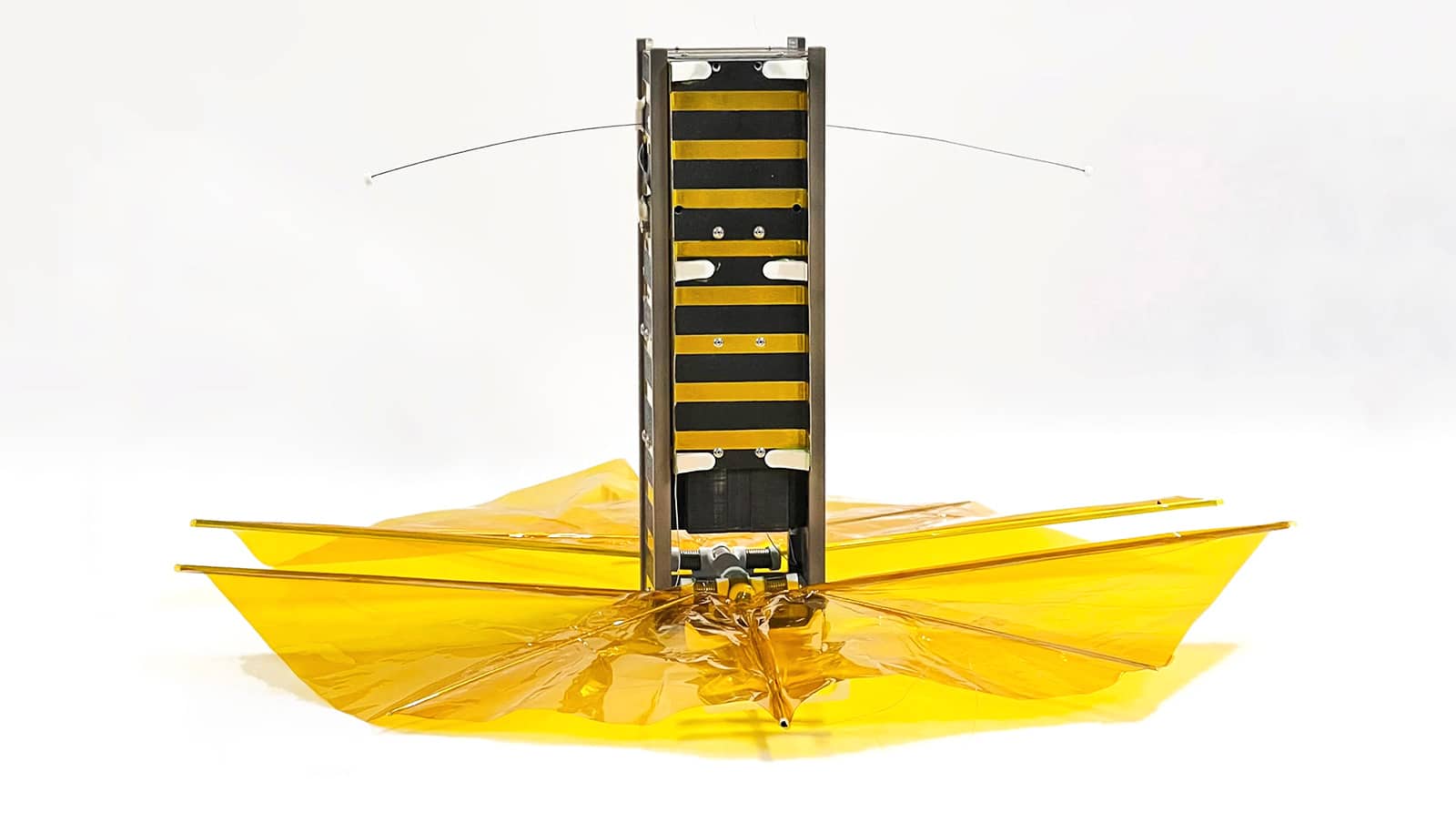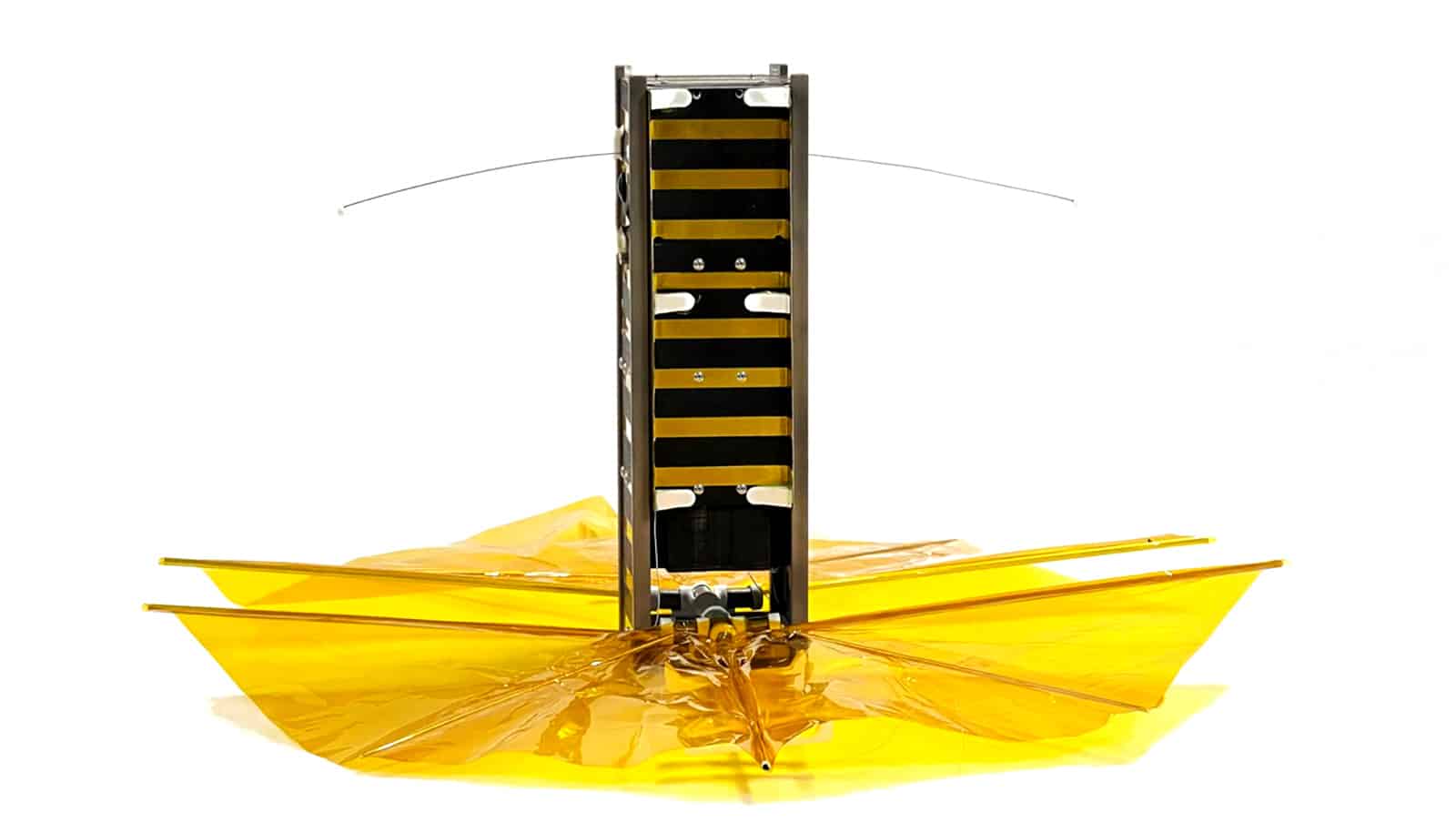A small cube satellite meant to demonstrate a practical, low-cost method to cut down on space debris has re-entered Earth’s atmosphere about five years ahead of schedule.
The student-built satellite made its re-entry sometime on Tuesday, August 8, or immediately after—burning up high above Turkey after 445 days in orbit, according to its last tracked location from US Space Command.
Called SBUDNIC, the satellite was built on a shoestring budget using off-the-shelf supplies available at most hardware stores, including 48 Energizer AA batteries. Rick Fleeter, a faculty member and Brown University and alum Marco Cross led the undergraduate student team that built and designed the satellite.
SBUDNIC blasted into space on Elon Musk’s SpaceX rocket last May as part of the Transporter 5 ridesharing mission and was designed to tackle the growing issue of space junk. For that purpose, the students added a key feature to the bread-loaf-sized cube satellite: a plastic drag sail made from Kapton polyimide.
The sail popped open like an umbrella upon deployment at about 520 kilometers, well above the orbit of the International Space Station, and helped push the satellite back down to Earth more quickly than anticipated.
“We were trying to prove that there are ways of deorbiting space junk after mission life has ended that are not super costly,” says Selia Jindal, who graduated from Brown in May and was one of the project leads.
“This showed that we can do that. We were successfully able to deorbit our satellite so that it’s no longer taking up space in Earth’s orbit. More importantly, the project really helped show there are significant plans we can put in place to combat the space junk problem that are cost effective.”
The successful proof of concept could have far-ranging impacts on efforts to cut down on space debris, which poses a potential danger to all current and future space vehicles. This is especially poignant considering the total cost of the student-designed cube satellite—about $10,000.
“There are companies that are trying to solve this problem of space junk with concepts like space tow trucks or nets in space that will capture space junk and take them out of orbit,” says Dheraj Ganjikunta, who graduated from Brown in 2022 and was SBUDNIC’s lead program manager.
“What’s amazing about SBUDNIC is that it’s magnitudes less cost than any of those solutions. Rather than taking junk out of space as it after it becomes a problem, we have this $30 drag device you can just throw onto satellites and radically reduce how long they’re in space.”
According to NASA, there are now more than 27,000 pieces of what it calls orbital debris or space junk being tracked by the Department of Defense’s global Space Surveillance Network. This orbital debris ranges from human-made objects in Earth’s orbit that no longer serve a useful function to defunct satellites.
One worst case scenario with so much traffic is that if a satellite explodes in an orbit that a number of other satellites also follow, this would set off a chain reaction that hits all the other satellites as well, closing off that orbit until all the debris deorbits.
“These are horrible scenarios but unfortunately the numbers dictate probability wise that this will happen eventually, so we need to be prepared,” says Cross, who graduated from Brown last year with a master’s degree in biomedical engineering and served as chief engineer for SBUDNIC.
Most satellites remain in orbit for an average of 25 years or more after they have served their purpose. To help combat this, the Federal Communications Commission adopted a new 5-year rule in 2022 for deorbiting satellites.
Looking at tracking data from Space Command, SBUDNIC represented an overwhelming success towards that goal, and it didn’t take long. In fact, SBUDNIC’s drop from orbit was visibly exponential.
In early March, for instance, SBUDNIC was at about 470 kilometers (about 292 miles) above the Earth while the other similarly-sized satellites deployed to the same altitude as part of the same SpaceX rideshare mission were still at altitudes of 500 kilometers (310 miles) or more. SBUDNIC’s last known position was recorded on August 8 at 146 kilometers (90 miles), before burning up in the atmosphere.
Source: Brown University
SBUDNIC, a student-built satellite returned to Earth’s atmosphere sometime around August 8, about five years ahead of schedule.


